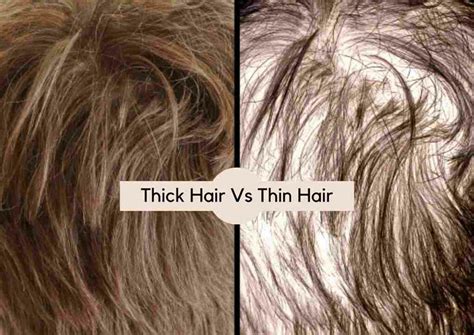Your scalp is the foundation of your hair, and its texture can significantly impact its appearance and health. Whether you have fine or thick scalp is primarily determined by genetics, but other factors like age, hormones, and hair care practices can also play a role.

Fine Scalp: Characteristics and Challenges
A fine scalp is characterized by thin, delicate skin and a low density of hair follicles. This means that your hair typically grows thinner and less voluminous.
Key Features:
- Thin skin: Prone to irritation and damage
- Low follicle density: Less hair growth
- Easily oily: Sebum production can overload follicles
- Prone to breakage: Hair lacks strength and support
Challenges:
- Volume issues: Hair can appear flat and lifeless
- Tangling: Fine hair is easily tangled and knotted
- Oily roots: Sebum can weigh down hair at the roots
- Heat damage: Fine hair is more susceptible to heat styling damage
Thick Scalp: Characteristics and Benefits
In contrast to a fine scalp, a thick scalp has thicker, more resilient skin and a higher density of hair follicles. This results in hair that is thicker, fuller, and more voluminous.
Key Features:
- Thick skin: Provides protection and support
- High follicle density: Supports abundant hair growth
- Healthy sebum production: Maintains scalp health
- Less prone to breakage: Hair is stronger and more durable
Benefits:
- Volume and fullness: Hair appears thicker and more luxurious
- Less tangling: Thick hair is less likely to tangle
- Protection: Thick scalp protects hair from environmental damage
- Styling versatility: Holds styles better and allows for more creative options
Hair Care Regimens for Fine and Thick Scalps
To maintain healthy hair and address specific scalp concerns, it’s crucial to tailor your hair care regimen to your scalp type.
Fine Scalp:
- Use lightweight shampoos and conditioners
- Avoid over-washing to prevent stripping natural oils
- Use volumizing products to enhance fullness
- Protect hair from heat damage with heat protectant sprays
Thick Scalp:
- Use clarifying shampoos to remove excess sebum
- Condition regularly to moisturize and strengthen hair
- Avoid heavy products that can weigh down hair
- Use detangling products to prevent tangles
Common Mistakes to Avoid
- Over-washing: Fine scalps can become dry and irritated with excessive washing.
- Using harsh products: Thick scalps can tolerate stronger products, but avoid overdoing it.
- Neglecting conditioning: Both fine and thick scalps require regular conditioning to maintain hair health.
- Skipping scalp care: The scalp requires care just like the hair. Use scalp scrubs or treatments to remove build-up and promote healthy growth.
Table 1. Key Differences Between Fine and Thick Scalps
| Feature | Fine Scalp | Thick Scalp |
|---|---|---|
| Skin Thickness | Thin | Thick |
| Follicle Density | Low | High |
| Sebum Production | Easily Oily | Healthy |
| Hair Volume | Low | High |
| Tangling | Prone | Less Prone |
Table 2. Hair Care Tips for Fine Scalps
| Concern | Solution |
|---|---|
| Volume Issues | Volumizing shampoos and conditioners |
| Tangling | Detangling products, gentle brushing |
| Oily Roots | Lightweight products, less frequent washing |
| Heat Damage | Heat protectant sprays, air-drying |
Table 3. Hair Care Tips for Thick Scalps
| Concern | Solution |
|---|---|
| Sebum Control | Clarifying shampoos, scalp scrubs |
| Detangling | Detangling brushes, conditioner |
| Heavy Hair | Lightweight products, layered haircuts |
| Styling Versatility | Gel, mousse, heat styling |
Table 4. Common Mistakes to Avoid for Both Scalp Types
| Mistake | Consequence |
|---|---|
| Over-washing | Dryness, irritation |
| Harsh Products | Damage, irritation |
| Neglecting Conditioning | Dry, weak hair |
| Skipping Scalp Care | Build-up, scalp problems |
Conclusion
Whether you have a fine or thick scalp, understanding the unique characteristics and challenges is essential for maintaining healthy hair. By following the appropriate hair care regimen and avoiding common mistakes, you can enhance the appearance and vitality of your hair, regardless of its scalp type.
